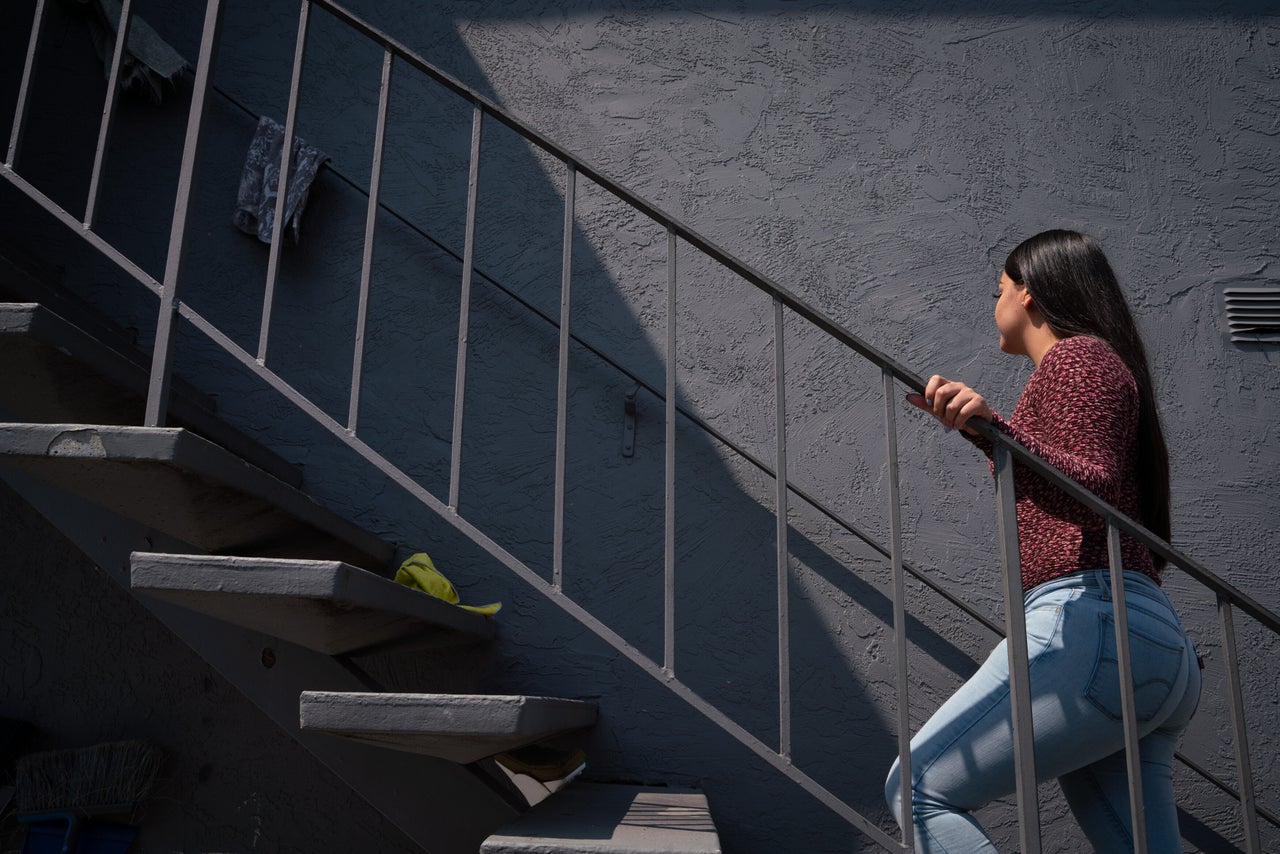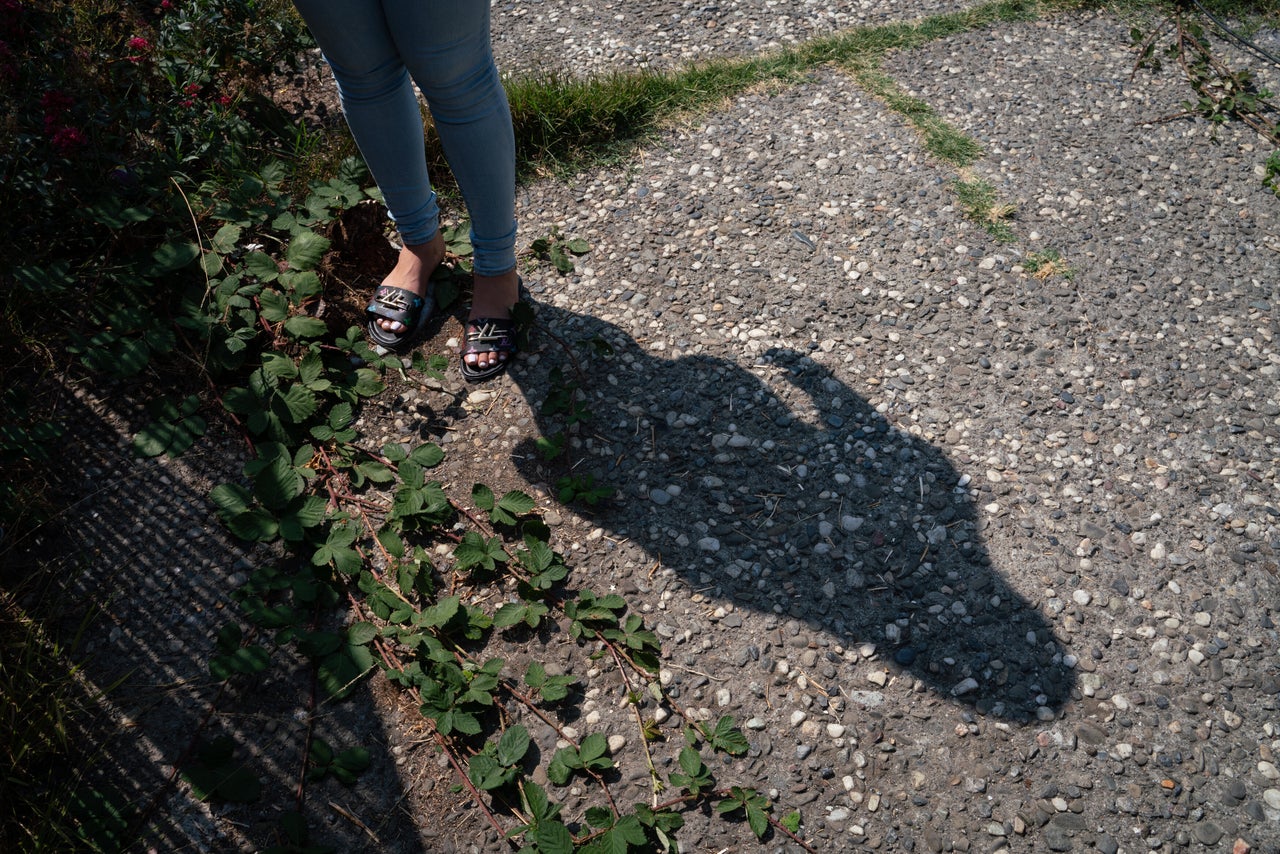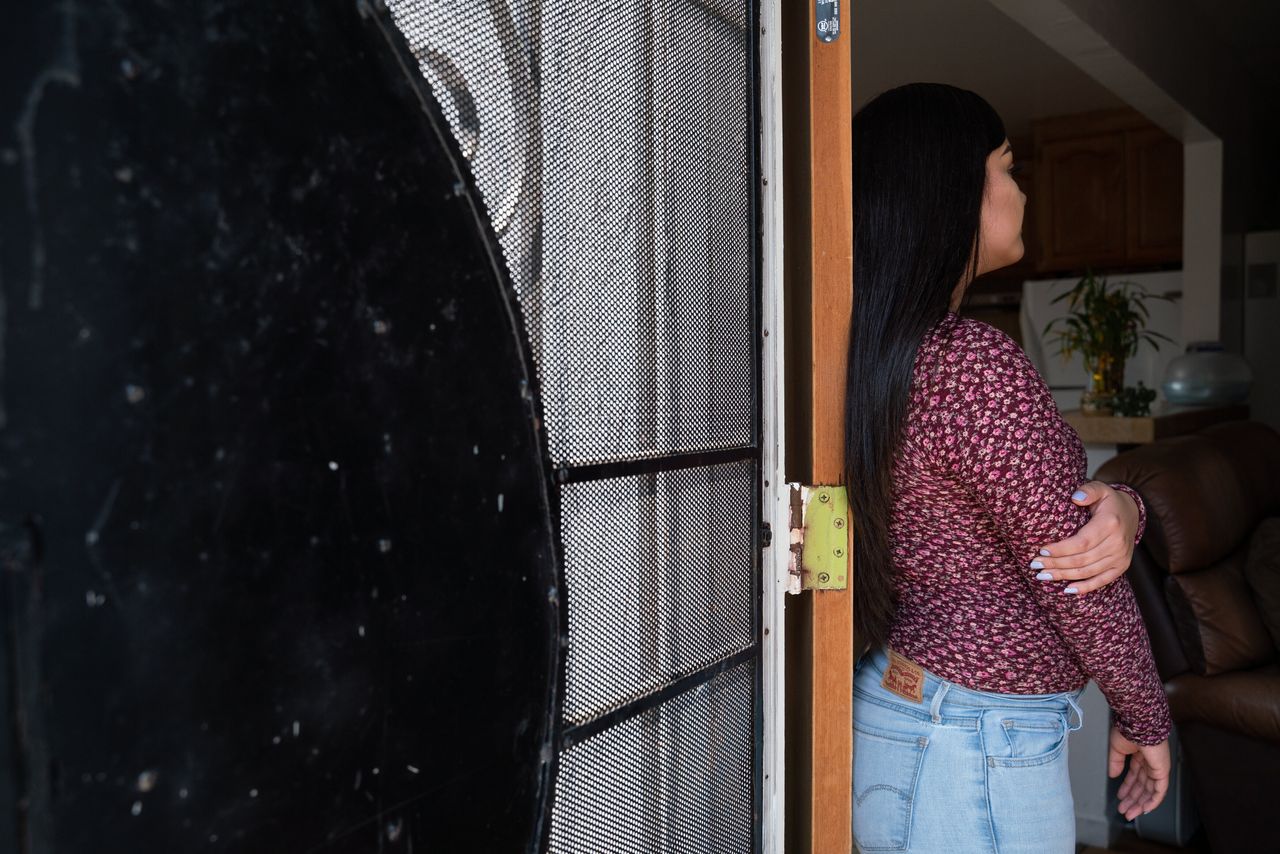The beginning of the pandemic hit Daniela, a junior in high school, with overwhelming force.
At the same time her high school shut down, her mom, who was six months pregnant, lost her job, and as a person who entered the country without documentation, she was excluded from federal assistance. Her stepdad, a construction worker, had his hours sharply reduced. Daniela would hear her mom crying about not having enough money and reluctantly asking friends for loans.
Daniela needed to help.
The teen previously spent her weekends working at a Mexican restaurant, using the extra cash to pitch in here and there. By the end of the school year, she was working nearly full time, participating in Zoom classes on her computer in between ringing up customers and submitting homework while anxiously asking patrons to wear masks.
Daniela — who shares her mother’s immigration status and asked us not to use her last name to protect her identity — started paying for her family’s phone, internet, water and electricity bills. Sometimes she’d buy their groceries, too. Her stepdad paid the rent, but she was the only person in her family with regular work.
“I got really stressed. I’m, like, ‘What am I gonna do? Who am I gonna ask for some help?’” 18-year-old Daniela said via Zoom in August, sitting in her bedroom in Northern California. She described the times she had to ask her supervisor for an early paycheck to pay the bills on time. “I feel good knowing I’m helping my mom out, but it’s also pressure.”
Daniela is one of many teens caught in the double crisis of an economic downturn and an education system in upheaval. Teens are being forced to become breadwinners, helping to fill in the gaps in their families’ income.
As most schools started the year either online or using a hybrid model, it’s also become easier for students to disengage from the classroom now that they don’t have to show up every day in person. The situation for families without immigration documentation, who so far lack access to federal assistance, appears especially dire. For Daniela, staying on top of both school and work has required Herculean effort.
Teachers around the country said they have had difficulty tracking down legions of students and getting them to sign on for remote learning. Some suspect many of these students are at their jobs instead of participating in class.
“Some of the older kids are out working with their parents. They have parents who are painters and construction workers and housekeepers,” Theresa Wagner, who teaches middle school physical education in Nashville, Tennessee, told HuffPost in August.
Experts fear a coming dropout crisis may be on the horizon for struggling students and that working kids could be especially vulnerable. Without an in-person school community and facing pressing family concerns, some kids have prioritized jobs over grades.
“I think there’s worry there’s some kids who have already dropped out,” said Robert Balfanz, a professor at Johns Hopkins University and director of the Everyone Graduates Center. “The challenge is, the way our system is set up, it’s hard to step out and step back in. We’re not currently set up for that very well.”

For about four weeks in March and April, no one in Daniela’s family had work, and they relied on a patchwork of resources for help. Both her school and a hospital where she previously interned sent gift cards that helped pay for a month of groceries. Her restaurant set up a GoFundMe for employees after temporarily shutting down. One of her teachers, Ms. Carey, alerted her to a California agency that provided $500 checks to families without immigration documents. (We are using only the teacher’s last name to protect Daniela’s identity.)
In mid-April, Daniela got the call that her restaurant reopened. Her employers prioritized giving her hours, even though they couldn’t bring most of their workers back.
Daniela started working 11 a.m. to 9 p.m four days a week. Her stepdad dropped her off and picked her up. She was often the only person at the restaurant besides one cook in the back. She staffed the cash register behind a screen of plexiglass and dealt single-handedly with customers decades her senior.
Daniela got an hour off during the day here or there to video chat with teachers. But she struggled to retain new material from school, thrown off by the confusion of remote learning and distracted by the pressure of her carefully choreographed routine ― the one that kept her parents, her two sisters and soon-to-be baby sibling afloat.
She carried the weight of the responsibility on her back. New aches and pains appeared. Her mom rubbed her shoulders until she could fall asleep at night. Headaches grew more frequent, and during moments of panic, when uncertainties over the future felt big and overwhelming, she guzzled water, relaxed by the repetitive sipping motions.
Fears over the pandemic became secondary to the immediacy of her family’s needs.
“I’m not really concerned about the virus. I’m mostly concerned about me being able to help my family out,” said Daniela, who wears thick false eyelashes that accentuate her manicured eyebrows and a thick ponytail tied tightly behind her neck. Besides, she said, “I don’t do anything. I’m just home or at work.”
By that time, Carey, who taught Daniela English and history throughout high school, was acquainted with the virtual view of the inside of Daniela’s restaurant from Zoom. Daniela did homework on the days she wasn’t working, texting Carey for help if she needed it. She passed all her classes.
“She’s just shown such resilience and drive,” said Carey, who also serves as Daniela’s academic advisor.
“She’s able to do it. I don’t know at what expense.”
Over the sticky summer, the days got longer and so did Daniela’s hours. She occasionally worked seven days a week. Her mom had a baby girl and spent two weeks in the hospital. When they got home, Daniela would cuddle her new sister, savoring her smile and memorizing the feel of her tiny hands in between shifts. She got a tattoo on her lower arm — three butterflies for each of her sisters, with their initials — and another on her chest with her mom’s name.
She never saw friends. She texted only with two girlfriends, one of whom was also working full time, earning money to help her similarly desperate family. Work and sleep were the only activities Daniela had time for. On days off she would help her mom around the house.
“I just wish I had some rest,” Daniela said. “I’m tired most of the time.”

Teachers around the country said they are watching as their students work long hours outside the home, far longer than they did before COVID-19.
Even in a relatively affluent Arizona suburb, high school chemistry and coding teacher Jacob Frantz suspected some of his students didn’t sign on during the first few weeks of the school year in August in favor of working. “I’m sure some of them are having to work minimum wage jobs to support their family,” he said.
In the Southern California city of Pasadena, high school history teacher Manuel Rustin can think of one student in particular who worked at a grocery store a few hours a week before the pandemic and then promptly ramped his hours up to 35 a week. His family needed the help.
“I do think for my students, most of them will try to stay in school, but I think as the semester progresses I won’t be surprised at all if a lot of them disappear,” Rustin said.
At Daniela’s California public high school, about 75 percent of students qualify for free or reduced-price lunches. Since the pandemic started, about a fourth of Carey’s students started working 20 hours a week or more, she said. They’re no longer just kids or students; they’re breadwinners, jaded about the challenges of work-life balance and the difficulties of navigating workplace drama.
“I have one student who works at a Michael’s in the suburbs, and she talked about ‘all the Karens’ she has to deal with. One works at a restaurant and is constantly getting yelled at for telling people to put on masks,” Carey said. “It’s not like they just have this responsibility. … There’s bad bosses and annoying co-workers.”
Carey was never concerned that Daniela would allow her schoolwork to suffer. Before the pandemic, Daniela got credits at a local college and interned at a hospital, laser-focused on getting into her dream college of San Jose State University, where she hopes to study forensics.
Several weeks ago, after driving to the restaurant to drop off gift cards for groceries, Carey helped Daniela speak with one of her supervisors about reducing her hours. The teen wanted to focus more on school and also get some breathing room. Daniela’s stepdad had been getting more work. Her mom was having some success buying wholesale items and reselling them for a profit.
Daniela now works three full days a week instead of four. Her mom also started helping more with the bills. Daniela still pays for the household’s phone and internet.
“I just like helping out my mom whenever I can. I don’t complain. I prefer for her to use that money she’s earning right now from the resale for her to find more stuff. I just prefer for her to keep that money and invest in something,” she said, sitting on her bed where her baby sister is curled up sleeping beside her.
Daniela’s classes take place in the morning before she goes to work. She’s hoping to graduate early and maybe take an EMT class. She’s gotten used to a solitary lifestyle. Shuttling solely between home and work is the new normal.
Her friend, the one also working long hours, is now looking to leave her job and has been inquiring about roles at Daniela’s restaurant. But sales have been going down. “It’s hard to pay the staff when we’re not getting enough money,” let alone bring on another employee, Daniela said.
For now, she’s reached a delicate homeostasis. She tries to avoid thinking about the elements that could throw it off balance.
“Before school ended a few months ago, when I was doing this, I was feeling overwhelmed. I didn’t have time to do my schoolwork. Hopefully this time I find some way to make it work,” she said sitting in front of a bright blue bedroom wall decorated with a photo collage. “I just don’t have time for myself a lot.”
In response to the publication of this story, Daniela has started a crowdfunding page to receive donations to help her family.
